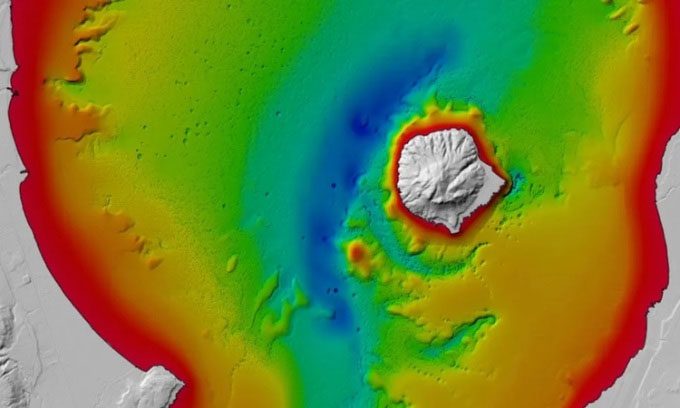Researchers Discover Unusual Magnetic Field While Mapping Lake Rotorua on the North Island.
Lake Rotorua is located at the center of an extinct volcano, which has been mapped in detail for the first time. The new map reveals a hidden geothermal system beneath the lake. Lake Rotorua is situated in the middle of a massive ancient crater of a volcano on New Zealand’s North Island. Rotorua is also famous for its geothermal activity, with steam clouds hovering around the lake’s shores and sulfur giving the water its distinctive blue-green color.

Detailed map of Lake Rotorua. (Photo: GNS Science).
A team of experts from GNS Science in New Zealand has mapped the lakebed of Rotorua in unprecedented detail, revealing eruption vents, an ancient river, and a significant magnetic anomaly in the southern part of the lake, reported Live Science on February 2. The new map demonstrates that the geothermal system of Rotorua extends to deep water layers, according to Cornel de Ronde, a scientist at GNS Science.
The map covers 55 km2, equivalent to 68% of the lakebed. The Royal New Zealand Navy collected some data, mapping the physical properties of the lakebed using multi-beam echo sounders, a type of sonar. They also conducted a magnetic survey, which led to the discovery of the anomaly. “Typically, with volcanic rock, when you place a magnetometer above it, you will detect a positive anomaly (a value exceeding the average magnetic field strength), but in this case, we recorded a negative anomaly, likely due to very low magnetic susceptibility,” de Ronde said.
Volcanic rocks usually contain high magnetic minerals like magnetite, but in Lake Rotorua, the research team believes that geothermal fluids flowing through the rock transformed magnetite into pyrite, a mineral that nearly has no magnetic signal. This geothermal process significantly diminishes the magnetic signal, potentially explaining the negative anomaly.
Researchers also found additional evidence of geothermal activity in the same area with the magnetic anomaly. Heat flow maps indicate that hot water, suspected to be rising from below, is coming up to the lakebed. The vents in this area are likely geothermal eruption vents.
However, the water temperature near the lakebed is generally a relatively cool 14 degrees Celsius, according to de Ronde. This is because the lake is large enough to have sufficient cool water to balance the heat rising from below, with the temperature fluctuating only about one degree Celsius over a month.





















































